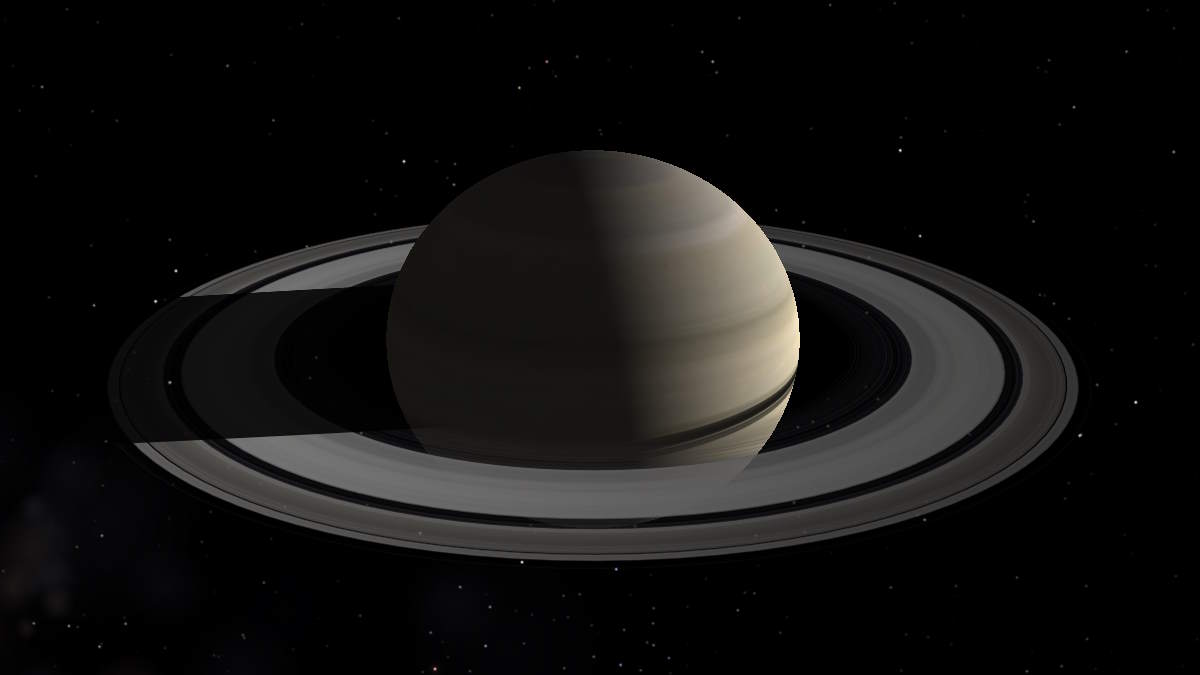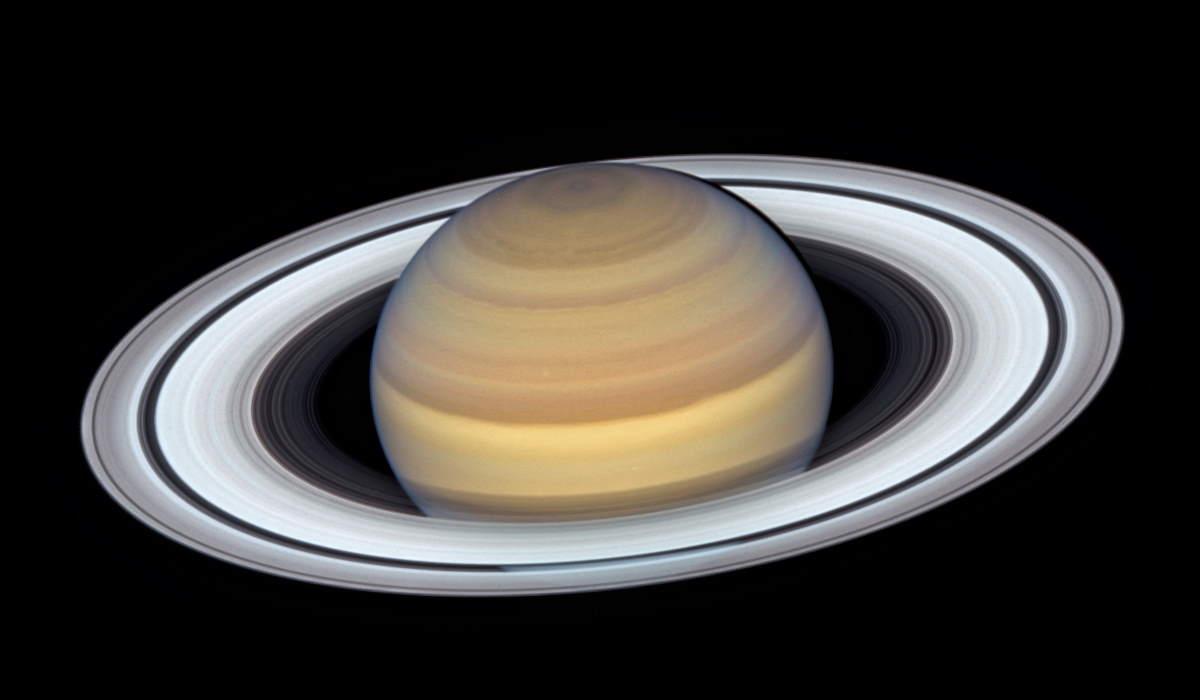Picture this: observing the solar system’s planets from a vantage point 384,400 kilometers (238,855 miles) away – the same distance that separates the Earth and the Moon. At this unique distance, the planets transform into a fascinating celestial display. Jupiter’s grandeur is more pronounced, its bands and moons visibly distinct. Saturn’s majestic rings, while subtler, still catch the eye with their delicate glow. This perspective not only alters their appearance but also enhances our appreciation for the vast scale and beauty of our solar system.
To bring this celestial journey to life, the images in this article were meticulously crafted using the Celestia Space Simulator. This powerful tool enables a realistic and detailed visualization of space, replicating the view from 384,400 kilometers away – the average distance between the Earth and the Moon. Each image is a careful composition, blending scientific accuracy with stunning visuals. Through Celestia’s advanced capabilities, we can appreciate the splendor of the solar system’s planets as if we’re observing them from the distance of our lunar neighbor.
Mercury
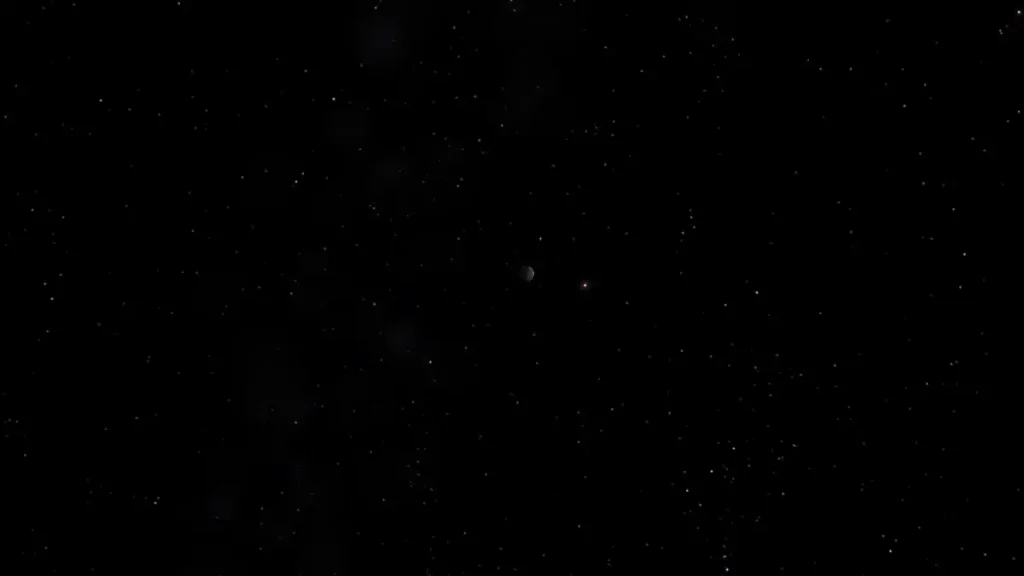
From a distance of 384,400 kilometers, Mercury presents itself as a modest but discernible sphere, glowing softly in the sun’s intense light.
Venus
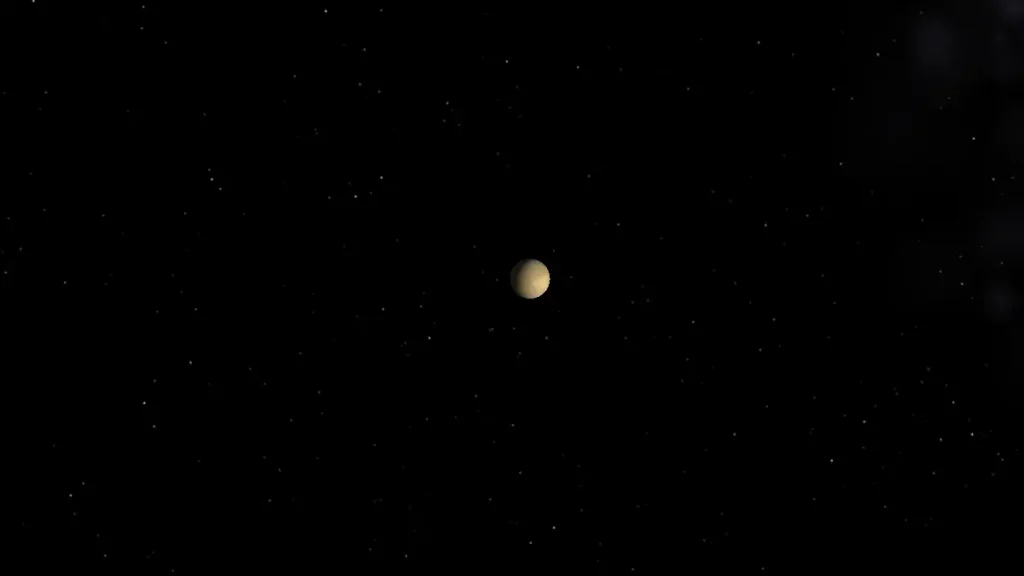
At 384,400 kilometers away, Venus shines with a captivating brilliance, reflecting sunlight from its dense atmosphere. This proximity reveals Venus as a bright, almost radiant sphere, larger and more luminous than distant stars. Its thick clouds impart a creamy, uniform appearance, masking the planet’s rugged surface.
Earth
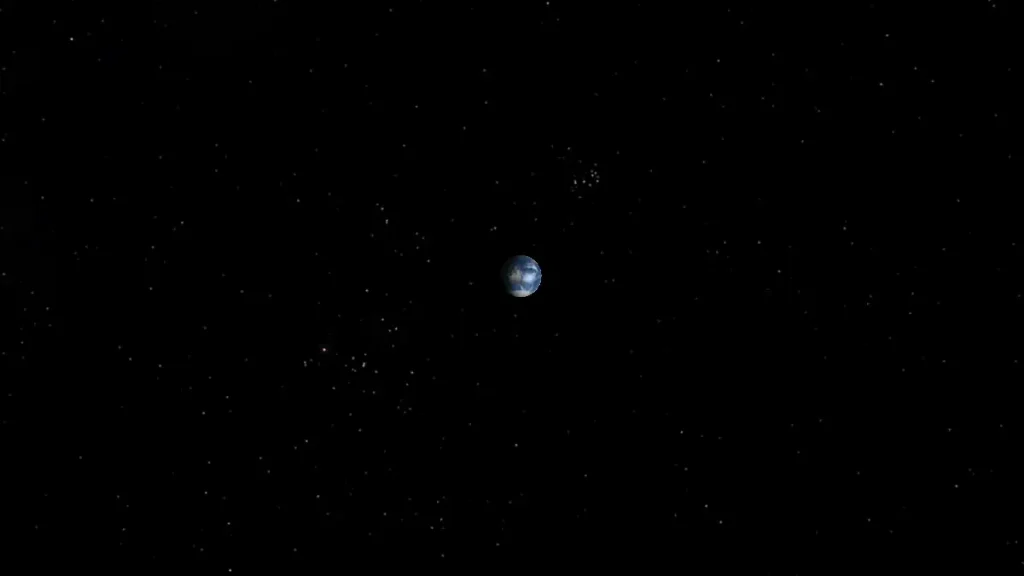
Viewed from 384,400 kilometers, Earth appears as a vibrant oasis of blues and greens, marked by swirling white clouds. Its colors are vivid against the dark backdrop of space, highlighting the planet’s unique water-rich environment and diverse ecosystems. This distance offers a breathtaking perspective of Earth’s beauty and fragility, a delicate blue marble floating in the vast cosmic expanse, a testament to the singularity of our home in the solar system.
Mars
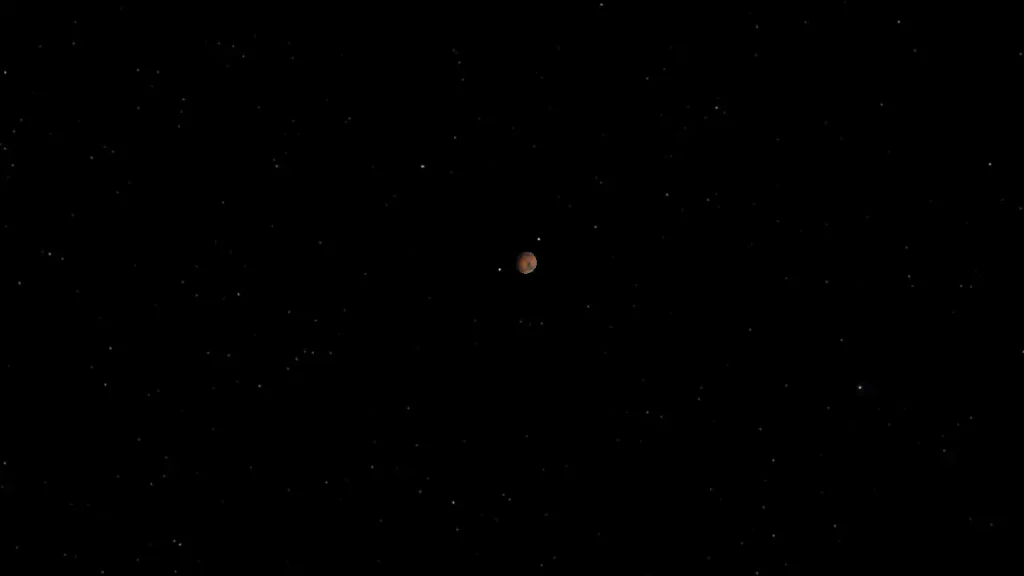
From 384,400 kilometers away, Mars displays its iconic rusty red hue, a testament to its iron-rich surface. The planet, though smaller than Earth, is visibly spherical and distinct. Its surface features, including vast plains and canyons, are subtly hinted at in this distant view. Mars stands as a silent, reddish sentinel in space, its desert-like appearance offering a stark contrast to the vibrant blues and greens of Earth.
Its two small satellites, Phobos and Deimos, appear as mere bright dots orbiting this desert-like planet.
Jupiter

At a distance of 384,400 kilometers (238,855 miles), Jupiter dominates the view with its immense size and swirling cloud bands. The planet’s famous Great Red Spot is visible, a vast, stormy blemish on its surface, hinting at the turbulent atmospheric conditions. Jupiter’s colorful bands of clouds, ranging from whites to browns, encircle the planet, enhancing its grandeur. This perspective showcases Jupiter as a colossal and dynamic world, a giant among the planets in our solar system.
Saturn

From 384,400 kilometers away, Saturn presents a breathtaking spectacle with its expansive and luminous ring system. The planet itself, a giant sphere with a muted yellow-brown hue, serves as a stunning backdrop to the rings, which are visible in astonishing detail. These icy rings, shimmering and delicate, encircle Saturn in a celestial dance, highlighting its unique and majestic presence in the solar system. The view captures Saturn’s elegant and timeless beauty, a testament to the wonders of our cosmic neighborhood.
Uranus

Observed from 384,400 kilometers away, Uranus appears as a serene, pale blue orb, its color resulting from the methane in its atmosphere. This distant view accentuates the planet’s icy nature, with its subdued and uniform appearance hinting at the cold, gaseous world beneath.
Neptune
From 384,400 kilometers away, Neptune emerges as a deep blue, almost mystical sphere in the darkness of space. Its color, richer and more intense than Uranus, speaks of a thick atmosphere rich in methane. This distant view of Neptune highlights its remoteness and size, presenting it as a tranquil but significant presence. Its deep azure hue encapsulates the mysterious and distant nature of this outer ice giant of our solar system.
Pluto and Charon

At a distance of 384,400 kilometers, Pluto (not a planet anymore) and its largest moon, Charon, appear as a modest, closely bound pair in the vast expanse of space. Despite their small size, especially when compared to Earth’s Moon, this duo captures interest with their faint but discernible presence. They, together form a distant, intriguing spectacle. Their combined appearance reflects the unique characteristics of these distant and enigmatic celestial bodies at the fringe of our solar system.
- Space Shuttle Endeavour’s Touchdown Meets Columbia’s Salute [An amazing photo from the past] - February 29, 2024
- Moon Landings: All-Time List [1966-2024] - February 23, 2024
- From Orbit to Ordinary: 10 Earthly Applications of Space Technology - January 23, 2024
